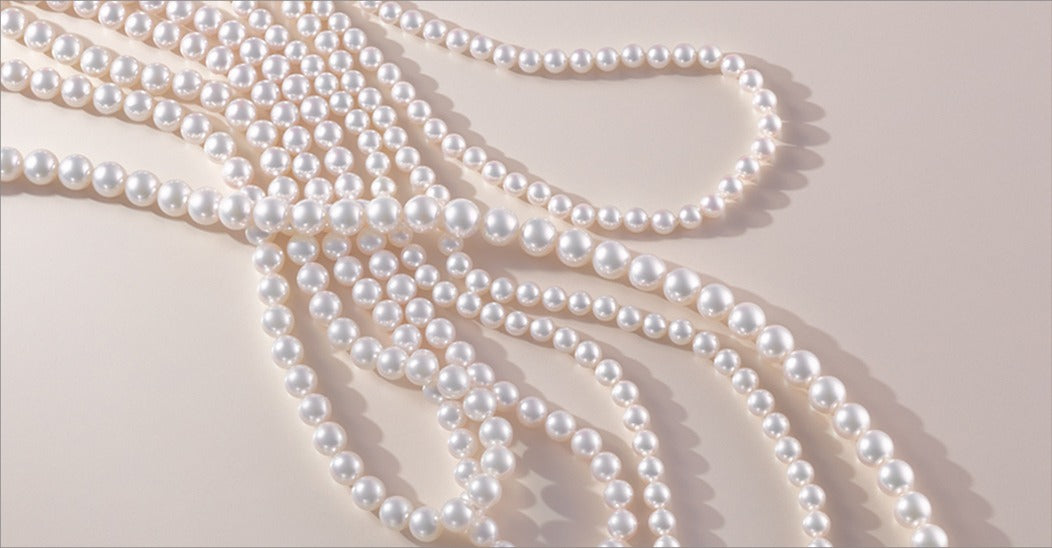
The Timeless Beauty of Pearls: Nature’s Perfect Gem
Share
Pearls have long been cherished for their natural beauty and timeless elegance. Whether worn in a simple necklace or featured in royal crowns, pearls continue to captivate jewelry lovers and collectors around the world. In this post, we’ll explore five fascinating facts about pearls, as well as the different types that make them so unique.
Fascinating Facts About Pearls
- Organic Gemstone
- A Wide Range of Colors

- Natural vs. Cultured
- Shapes and Sizes Vary

- Lustre is Key

Types of Pearls
-
Akoya Pearls
These are the classic white pearls, often associated with fine jewelry. They are typically smaller, round, and highly lustrous, making them a popular choice for pearl necklaces and earrings. Akoya pearls are predominantly cultivated in Japan. -
Tahitian Pearls
Famous for their dark hues, Tahitian pearls are grown in the waters of French Polynesia. While often black, they can also appear in shades of green, peacock, and silver. Their exotic, iridescent colors make them highly sought after. -
South Sea Pearls
Known for their large size and luxurious appearance, South Sea pearls are cultivated in the warm waters of Australia, the Philippines, and Indonesia. They come in both white and golden shades and are often considered the "royalty" of pearls due to their size and rarity. -
Freshwater Pearls
These pearls are grown in freshwater lakes and rivers, mainly in China. Unlike their saltwater counterparts, freshwater pearls are typically less round and can come in a variety of colors, including pink, peach, lavender, and white. They are often more affordable but still stunning.

From their unique formation process to their diverse range of colors and shapes, pearls are a true marvel of nature. Whether you’re looking for a classic piece of jewelry or something a little more exotic, there’s a pearl to suit every taste and occasion. No wonder these gems have stood the test of time, remaining a symbol of elegance and sophistication for centuries.

